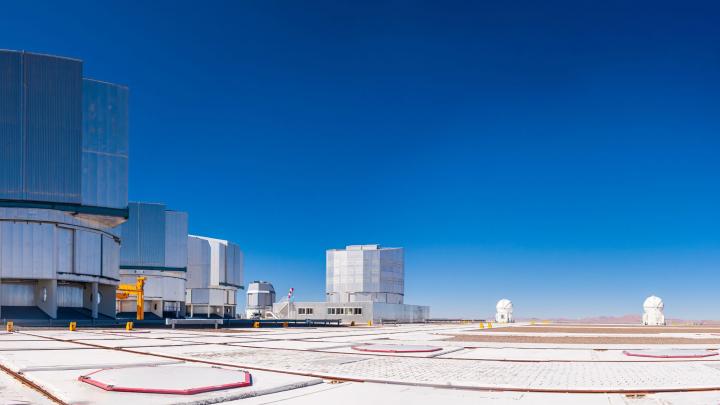An international team of scientists, including one from Poland, has published the results of asteroid observations made with the European Southern Observatory (ESO) VLT telescope. Images are shown of dozens of the largest objects in the main asteroid belt between the orbits of Mars and Jupiter.
ESO’s press release confirms that accurate images of such a large group of asteroids are a leap forward in the study of these objects. Observations show a wide range of strange shapes, from spherical to dog bones, helping astronomers understand the origins of asteroids in the solar system.
“So far, only three large objects on the main strip, Ceres, Vista and Lutetia, have been imaged with an adequate level of detail as they have been visited by the Dawn and Rosetta space missions. Presented by Pierre Vernazza of the Astrophysics Laboratories de Marseille in France, who led the research: Our ESO notes are sharp images for many purposes, 42 in total.”
The lack of detailed observations meant that the main properties of these objects, such as 3D shapes and density, remained largely unknown. To fill this gap, scientists conducted observations from 2017 to 2019.
Most objects examined have a diameter of more than 100 km, including almost all larger objects, which measure more than 200 km (20 of the 23 objects of this size are in the main asteroid belt). The largest objects examined are Ceres (940 km) and Vesta (520 km), the first of which has been classified as a dwarf planet. In contrast, the smallest specimens in the analyzed sample are Urania and Osonia, each of which is about 90 km long.
The reconstruction of the figure showed that the observed asteroids are divided into two main families. The first are almost perfectly spherical bodies (like Hygiea and Ceres), and the second are bodies with unusual elongated shapes (the most unusual thing here seems to be Cleopatra similar to a dog bone).
By knowing the shapes and combining them with information about the blocks, it was possible to determine the densities. This parameter turned out to be very diverse. Less dense asteroids are about 1.3 grams per cubic centimeter, which is roughly the density of carbon. On the other hand, the densest, Psyche and Kaliope, have 3.9 and 4.4 grams per cubic centimeter, which is more than diamond (with a density of 3.5 grams per cubic centimeter).
These large differences in density may indicate large differences in the composition of these bodies, which in turn could mean that they come from different regions of the solar system. So it is probably correct to assume that less dense asteroids originated in the far regions of the solar system, far from the orbit of Neptune, and then migrated to their current positions.
Scientists hope that when the Extremely Large Telescope (ELT), which is currently being built by the European Southern Observatory, begins its observations within a few years, it will be possible to study asteroids with smaller diameters, from 35 to 80 km, as well as craters on their surfaces ranging in size From 35 to 80 km from the Earth’s surface 10 to 25 km. It is also possible that it will be possible to correctly image dozens of objects from the Kuiper belt, which is a group of asteroid-like objects that are very far from us.
Among the authors of the article published in the journal “Astronomy and Astrophysics” there are several Polish names: Edyta Podlewska-Gaca, Przemysław Bartczak, Grzegorz Dudziński, Agnieszka Kryszczyńska, Anna Marciniak, Tadeusz Michałowski, J. ukaka Uzka Miev Socha (Nieborowice). Astronomers from Poznan specialize in the study of asteroids, in particular in their shape modeling (PAP).
CZA / AGT /

“Music specialist. Pop culture trailblazer. Problem solver. Internet advocate.”







